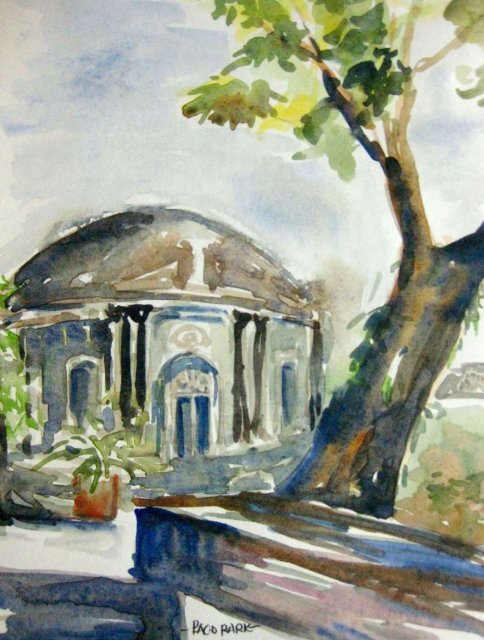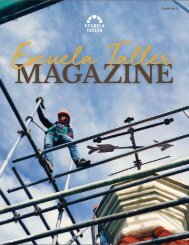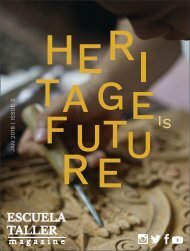Escuela Taller Magazine - Issue 1
Escuela Taller Magazine is the official magazine of Escuela Taller de Filipinas Foundation Inc. (ETFFI). Escuela Taller is a training center situated in Intramuros, the historical walled city of Manila, whose main objective is to equip the youth with knowledge and specialized skills to help them uplift their economic status while focusing on the preservation of heritage structures. Our trainees are the protectors of the Philippine built heritage.
Escuela Taller Magazine is the official magazine of Escuela Taller de Filipinas Foundation Inc. (ETFFI).
Escuela Taller is a training center situated in Intramuros, the historical walled city of Manila, whose main objective is to equip the youth with knowledge and specialized skills to help them uplift their economic status while focusing on the preservation of heritage structures. Our trainees are the protectors of the Philippine built heritage.
Create successful ePaper yourself
Turn your PDF publications into a flip-book with our unique Google optimized e-Paper software.
Section<br />
Sa Kanto<br />
Sa Kanto is <strong>Escuela</strong> <strong>Taller</strong>’s magazine<br />
illustration section about built heritage<br />
in the Philippines.<br />
PACO PARK<br />
959 San Marcelino Street, Paco, Manila City<br />
1814. “Paco Cemetery (now Paco Park) was built<br />
in the suburb of San Fernando de Dilao. The<br />
construction of the cemetery began in 1814, but<br />
the cholera epidemic that wreaked havoc on the<br />
city prompted the use of the cemetery in 1820. The<br />
Cementerio General de Dilao became the resting<br />
place for Spaniards, indios, and mestizos who came<br />
from the different parishes adjacent Manila, which<br />
included Intramuros, Binondo, Quiapo, San Miguel,<br />
Sta. Cruz, Sampaloc, Tondo, Ermita and Malate.<br />
Paco Park, its niches empty and no longer used for<br />
burials, is now a hushed, well cultivated park.<br />
The remains of our national hero, Dr. Jose Rizal<br />
were interred in the cemetery immediately after<br />
his execution in Bagumbayan (now Luneta). He was<br />
buried in the ground between the inner and outer<br />
walls and his former burial site marked with his<br />
initials in reverse R.P.J (Rizal Protacio Jose). The<br />
bodies of the Gomburza, the three martyred priests,<br />
were also buried in the historic Paco Cemetery”.<br />
70<br />
71





